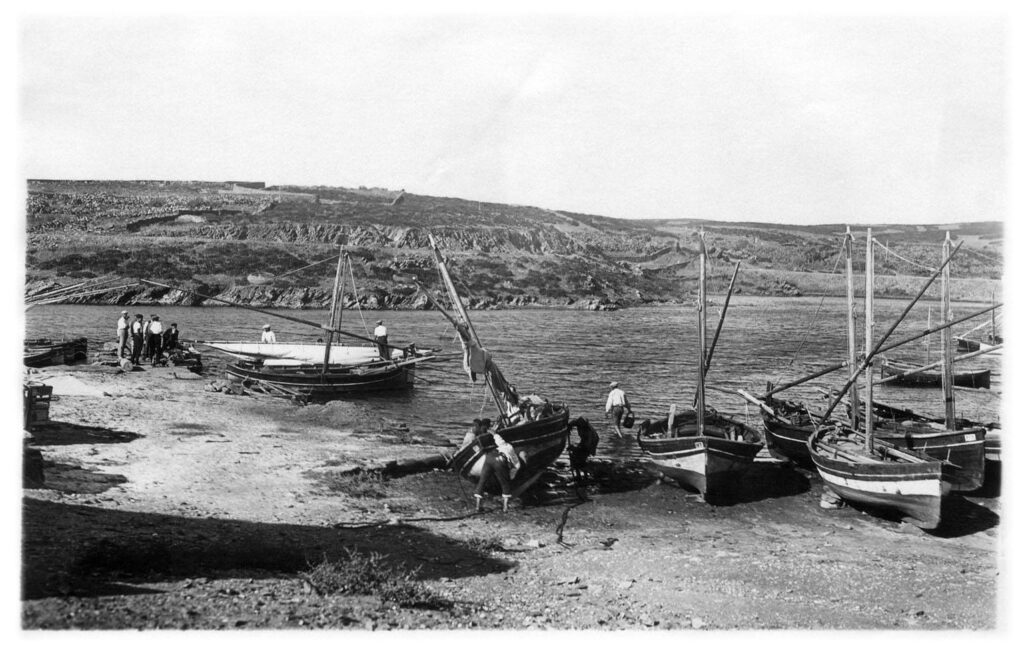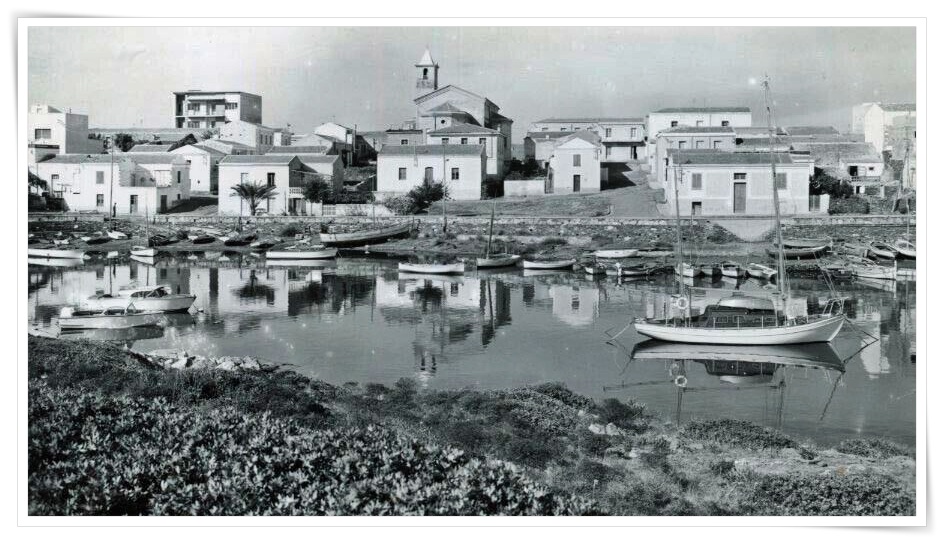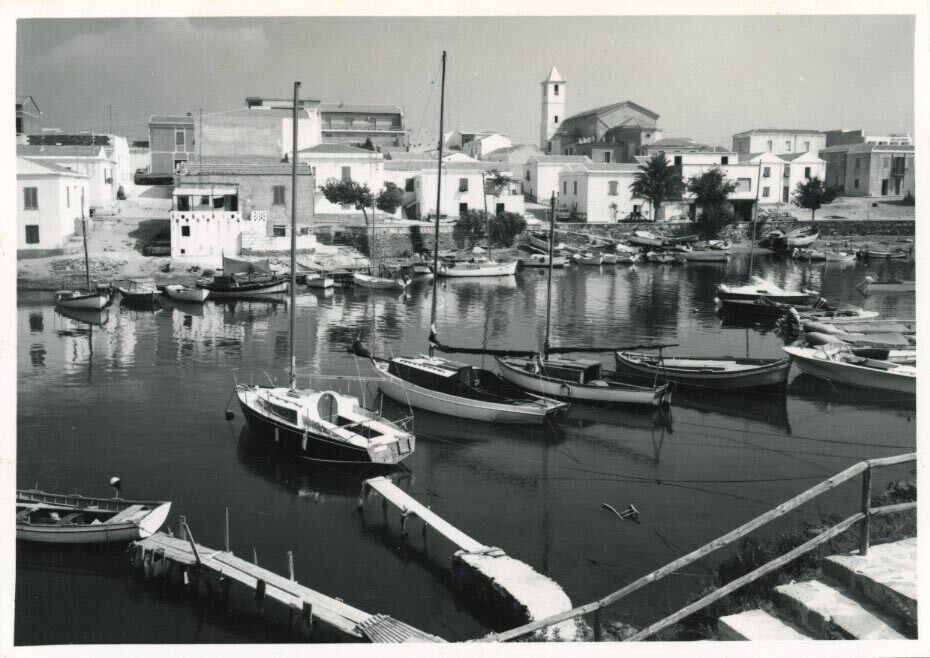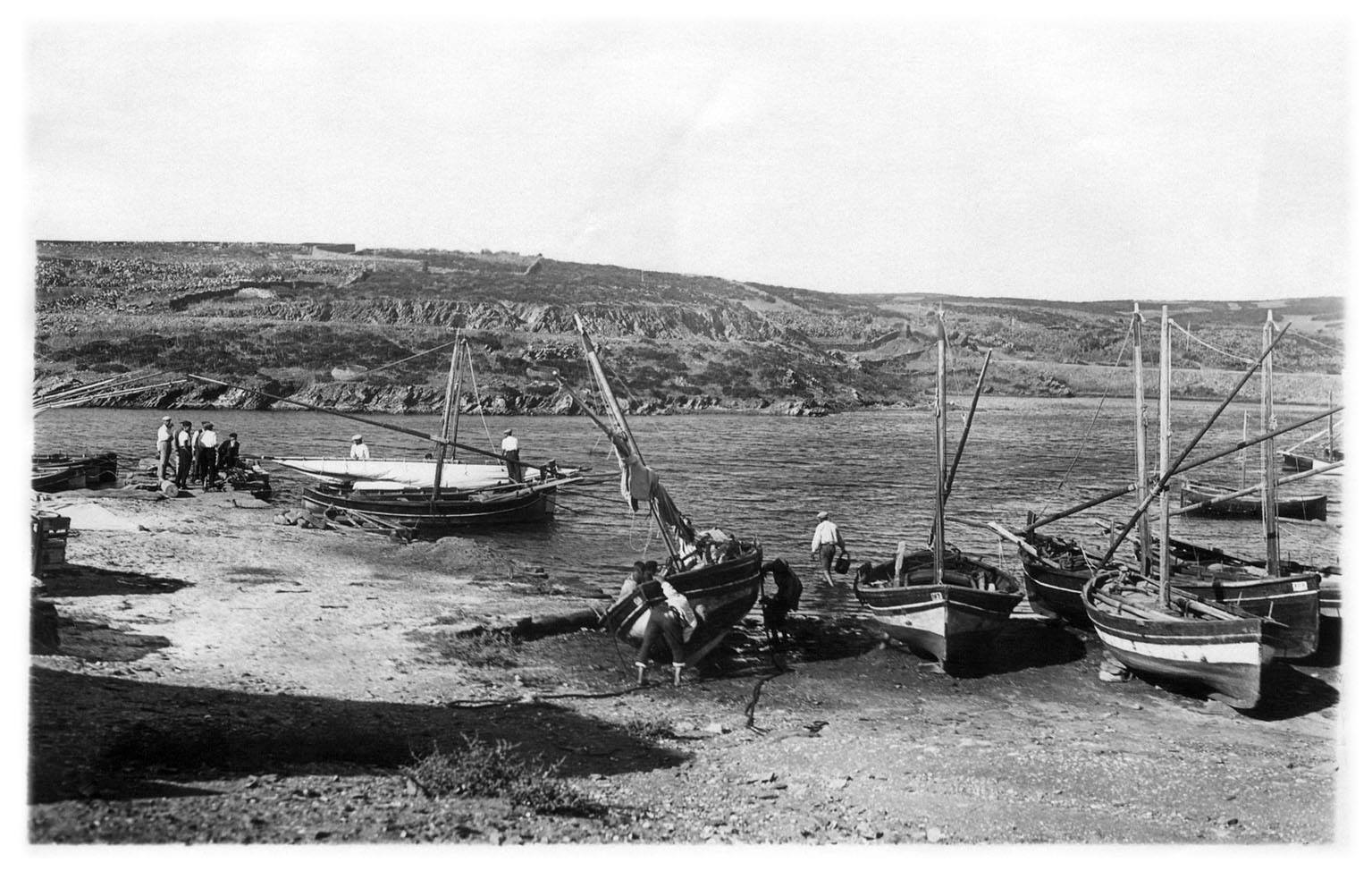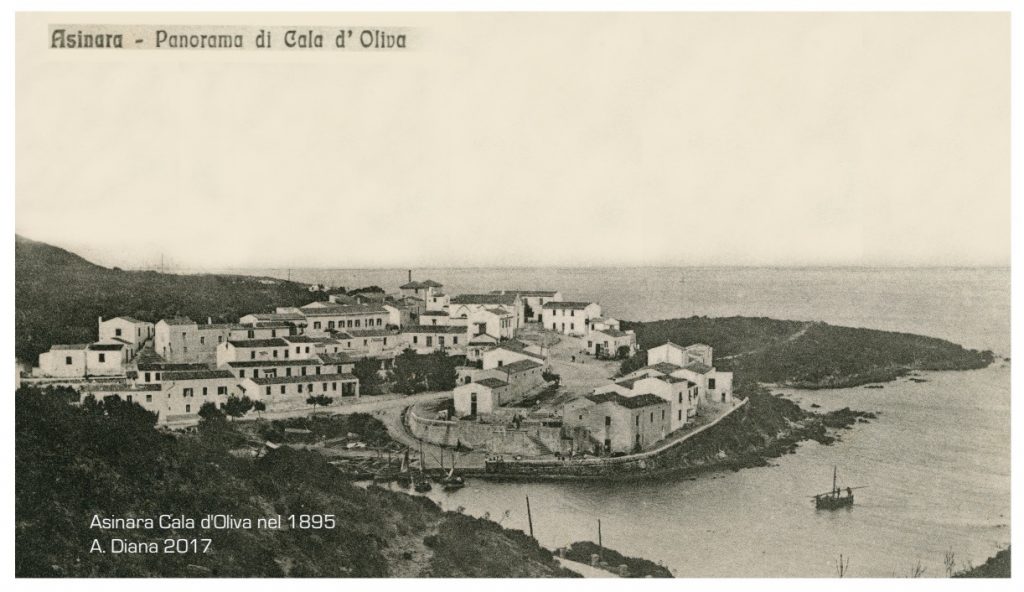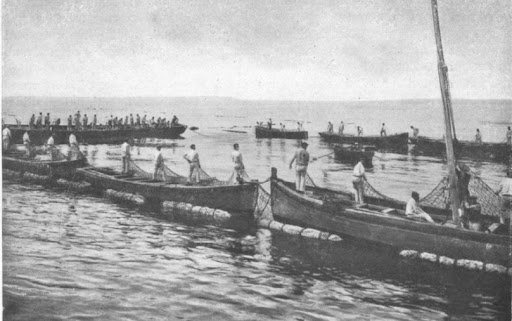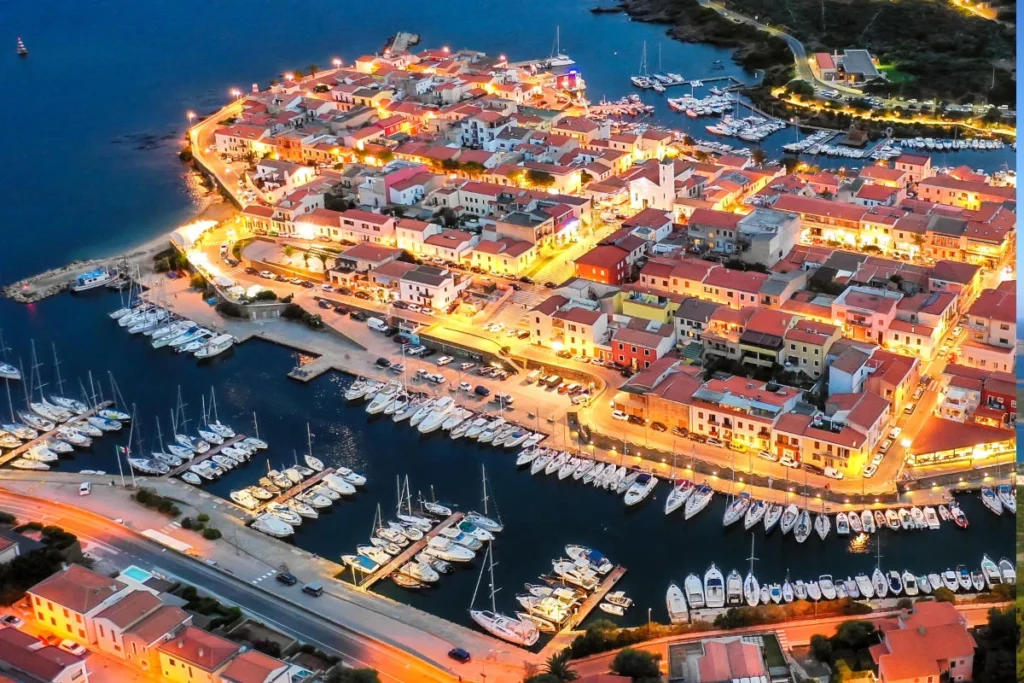Origins and Early Settlements
The history of Stintino has its roots in the second half of the 19th century, when several fishing families decided to settle in this coastal area in the northwest of Sardinia. The territory was particularly suitable for tuna fishing and other sea-related activities. In fact, the early history of Stintino revolves around the economic opportunities offered by the surrounding waters, rich in fish and easily accessible thanks to the geographical layout of the area.
During this initial period, Stintino’s story is marked by slow but steady growth: fishermen began building small houses near the natural harbor, facilitating trade with nearby regions. Today, looking back, the history of Stintino tells of a community that knew how to sustainably harness the resources of the sea, laying the foundation for the village’s future development.

The Influence of Asinara and the Tonnara
The nearby island of Asinara plays a fundamental role in the history of Stintino. When Asinara was turned into a penal colony, many families were relocated to the mainland, further shaping the story of Stintino. Tuna fishing using the tonnara—a traditional and sustainable method—became the main source of livelihood for many generations.
Stintino’s history is therefore closely intertwined with that of Asinara, as the fishermen of Stintino also managed fishing activities in the waters surrounding the island. The economic importance of the tonnara encouraged the construction of infrastructure and the rise of small artisanal businesses that provided nets, tools, and essential services to the community.
In this way, the history of Stintino saw the village gradually transform from a small fishing hamlet into a key reference point for the entire surrounding area.
The Growth of the Village and the First Institutions
As the years went by, the history of Stintino became enriched with new challenges and opportunities. As the number of fishing families grew, the need for social and educational structures became evident. The first schools were built, and the parish was established—key events in the history of Stintino, marking the transition from an isolated hamlet to an organized community.
Commercial relations with Sassari and Porto Torres became more frequent, facilitating the exchange of goods and increasing awareness of the Stintino area beyond the coastal region.
During this period, the history of Stintino is that of a village beginning to realize its own identity—keeping fishing and the sea at its core, while gradually opening up to new prospects for growth.
The Bond with Maritime Culture
A defining feature of Stintino’s history is the strong maritime identity shared by its inhabitants. Vela latina (lateen sailing), wooden boat building, and religious celebrations tied to the sea are all elements that have shaped the character of the local population.
Stintino’s history is marked by events such as the Regatta of the Vela Latina, a celebration of nautical traditions that draws crews from all over Sardinia each year. This event, emblematic in the story of Stintino, reflects how the village has managed to preserve and enhance its cultural heritage, turning it into a moment of gathering and territorial promotion.
Small artisan workshops, specialized in crafting and repairing fishing nets, represent another precious element: the history of Stintino would not be the same without the knowledge passed down through generations.
Transformations of the 20th Century
As Stintino entered the 20th century, its history underwent significant transformations. The growth of port activities and the arrival of new fishing technologies influenced both the way people worked and how they lived.
During the wartime periods, Stintino’s story became intertwined with national events, and some fishermen were called to serve in the military far from their homeland. Despite the hardships, the village remained resilient, continuing to rely on the sea as its primary source of livelihood.
The introduction of marine engines and fish refrigeration systems enabled broader commercial distribution. However, the history of Stintino highlights how the local community always strived to preserve traditional fishing methods, respecting the natural rhythm of the seasons and the balance of marine ecosystems.
The Birth of Seaside Tourism
In the 1960s and 1970s, a new chapter began in the history of Stintino: attention gradually shifted toward seaside tourism. La Pelosa Beach, with its dazzling white sand and crystal-clear waters, became a symbol of the natural beauty of this part of Sardinia.
Stintino’s story thus took a different turn: hotels, guesthouses, and small accommodations began to appear near the beaches, while some fishermen reinvented themselves as tour guides or offered boat excursions. The village quickly changed its appearance, gaining greater visibility at both regional and national levels.
Nevertheless, the history of Stintino remains deeply tied to the sea and its fishing traditions, which continue to represent the beating heart of the town.
The Impact of the Asinara Protected Area
Another crucial turning point in the history of Stintino was the transformation of Asinara into a National Park and Marine Protected Area in the 1990s. This event further strengthened the bond between the village and the island, generating a tourism economy focused on guided tours, environmental conservation projects, and wildlife observation.
At this stage, the history of Stintino reveals a community that successfully adapted to a new reality: no longer focused solely on fishing, but also on ecotourism and sustainability. Environmental education initiatives, promoted in collaboration with the Asinara Park, raised awareness about the importance of preserving natural resources.
In this way, Stintino’s history gained added value—merging ancient traditions with new development opportunities.
Economic and Social Development
Over the decades, the history of Stintino has revealed a gradual process of economic diversification. Alongside fishing and seaside tourism, service businesses, restaurants, and artisan workshops began to flourish, capitalizing on the village’s growing reputation.
The opening of new venues and small shops selling typical Sardinian products attracted a more diverse type of tourism—visitors interested not only in the sea, but also in the local gastronomy and culture.
Stintino’s history is also that of a community investing in its future: the modernization of infrastructure—such as roads and port services—has improved the town’s accessibility.
However, to truly understand the history of Stintino, one must always return to the legacy of its fishermen and the enduring bond with the sea.
Traditions, Festivals, and Local Identity
Today, the history of Stintino is still reflected in its local traditions and festivals, which celebrate the sea and the patron saints. Processions of decorated boats, folk songs, and tastings of typical dishes remind both residents and visitors of the deep importance of the village’s heritage, rooted in the bounty of the sea.
A characteristic example is the Festa della Madonna della Difesa, during which the entire community comes together to honor its protector.
In fact, the history of Stintino lives on daily through these expressions of faith and togetherness, serving as a social glue for the locals and a cultural draw for visitors passionate about Sardinian traditions.
The History of Stintino—Today and Tomorrow
The history of Stintino continues to evolve, driven by a focus on sustainability and a deep commitment to preserving what makes this land unique. Balancing the traditions of fishing with the demands of an increasingly discerning tourism industry is one of the central challenges of the present.
Looking ahead, the story of Stintino may be enriched by new chapters centered on innovation and the protection of the marine and coastal environment. Through environmental education projects and cultural initiatives, the village remains a shining example of how economic progress can go hand in hand with respect for nature.
The history of Stintino, therefore, is a blend of past and future—a journey marked by challenges and achievements that, generation after generation, fuels its people’s passion for the sea, the land, and the sharing of authentic values.
Per ulteriori approfondimenti, puoi consultare il Sito Ufficiale del Comune di Stintino.
CO.PE.G.A. SOC.COOP ARL
VIA ANTONELLI, 16
07046 PORTO TORRES
TEL. +39 3405088946 +39 3474020438
info@pescaturismostintino.eu

